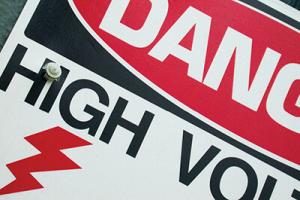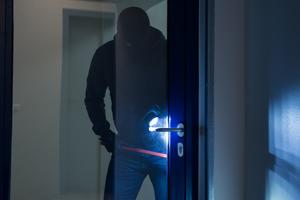Parking lot safety
Property crime occurs every three seconds…theft occurs every five seconds…auto theft occurs every 25 seconds…violent crime occurs every 35 seconds…robbery occurs every 60 seconds. Keep yourself safe.
Remember the acronym: B-SAFE
Brightness
- If you are parking during daylight hours, think about when you will be returning to your car. If it will be dark when you return, park in a well-lit area as close to lights as possible. Even if you plan on returning during daylight hours, park somewhere where your vehicle will be well lit in case you are delayed.
- If parking at night, choose an area that is well lit. If you cannot see your vehicle from a fair distance from the building, park somewhere else. The greater the isolation of the vehicle and the less amount of light, the more the opportunity is created for a thief.
Security devices
- Make sure you lock your car to engage the alarm. If your car is not equipped with an alarm system, consider having one installed. Alarm stickers and decals are a great visible deterrent.
- Other visible deterrents include steering wheel locks and brake pedal locks. These show criminals that your vehicle will take much more time to steal or vandalize, and they will most likely leave and look for an easier target. If you prefer, a whistle can be carried to notify any bystanders if you become involved in a dangerous situation.
Awareness
- Be aware of your surroundings both when parking and returning to your vehicle. Drive through the lot and check it out first if you are unfamiliar with that particular lot. Look around when getting out of your vehicle after parking. If you see any individuals loitering or acting suspicious, park somewhere else and notify the appropriate management or security; this also applies for when returning to your vehicle.
- Keep your keys in hand when returning so you can enter your vehicle quickly if needed. Also, it is always a good idea to check your backseat before entering your vehicle to ensure there is no one hiding inside.
Foliage
- Do not park close to bushes, trees, walls, large vehicles or any other obstruction that may provide a cover for criminals. It can also reduce your ability to see and assess your surroundings. Making yourself and your vehicle highly visible will greatly reduce the chance for creating an opportunity for theft or vandalism.
Enclose
- One of the most important (and easily forgettable) tips, LOCK all doors and make sure all windows are shut TIGHT. Don’t forget to lock the trunk if it locks separately from the vehicle doors.
- When returning to your vehicle, lock your doors immediately upon entering.
- Lock and secure everything even if entering a building for a couple of minutes; it only takes a thief a few seconds to enter the vehicle and steal property or the vehicle itself.
- Hide or remove anything valuable from the vehicle. Conceal them when walking into the building; do not carry valuables in the open. If you cannot take it with you, place it in the glove compartment or trunk and lock it. If that is not possible, cover the items with a blanket as to not make them visible. Even if the items don’t seem valuable to you, they may be valuable to a thief.
One last tip
Back your vehicle into parking spaces if possible. This allows you to be able to leave quickly if a situation becomes dangerous. Note where you have parked; this reduces unnecessary time walking around the parking lot.
This material is provided for informational purposes only and does not provide any coverage or guarantee loss prevention. The examples in this material are provided as hypothetical and for illustration purposes only. The Hanover Insurance Company and its affiliates and subsidiaries (“The Hanover”) specifically disclaim any warranty or representation that acceptance of any recommendations contained herein will make any premises, or operation safe or in compliance with any law or regulation. By providing this information to you, The Hanover does not assume (and specifically disclaims) any duty, undertaking or responsibility to you. The decision to accept or implement any recommendation(s) or advice contained in this material must be made by you.
LC NOV 2018 08-66
171-0865 (1/14)
Parking lot safety
Property crime occurs every three seconds…theft occurs every five seconds…auto theft occurs every 25 seconds…violent crime occurs every 35 seconds…robbery occurs every 60 seconds. Keep yourself safe.
Remember the acronym: B-SAFE
Brightness
- If you are parking during daylight hours, think about when you will be returning to your car. If it will be dark when you return, park in a well-lit area as close to lights as possible. Even if you plan on returning during daylight hours, park somewhere where your vehicle will be well lit in case you are delayed.
- If parking at night, choose an area that is well lit. If you cannot see your vehicle from a fair distance from the building, park somewhere else. The greater the isolation of the vehicle and the less amount of light, the more the opportunity is created for a thief.
Security devices
- Make sure you lock your car to engage the alarm. If your car is not equipped with an alarm system, consider having one installed. Alarm stickers and decals are a great visible deterrent.
- Other visible deterrents include steering wheel locks and brake pedal locks. These show criminals that your vehicle will take much more time to steal or vandalize, and they will most likely leave and look for an easier target. If you prefer, a whistle can be carried to notify any bystanders if you become involved in a dangerous situation.
Awareness
- Be aware of your surroundings both when parking and returning to your vehicle. Drive through the lot and check it out first if you are unfamiliar with that particular lot. Look around when getting out of your vehicle after parking. If you see any individuals loitering or acting suspicious, park somewhere else and notify the appropriate management or security; this also applies for when returning to your vehicle.
- Keep your keys in hand when returning so you can enter your vehicle quickly if needed. Also, it is always a good idea to check your backseat before entering your vehicle to ensure there is no one hiding inside.
Foliage
- Do not park close to bushes, trees, walls, large vehicles or any other obstruction that may provide a cover for criminals. It can also reduce your ability to see and assess your surroundings. Making yourself and your vehicle highly visible will greatly reduce the chance for creating an opportunity for theft or vandalism.
Enclose
- One of the most important (and easily forgettable) tips, LOCK all doors and make sure all windows are shut TIGHT. Don’t forget to lock the trunk if it locks separately from the vehicle doors.
- When returning to your vehicle, lock your doors immediately upon entering.
- Lock and secure everything even if entering a building for a couple of minutes; it only takes a thief a few seconds to enter the vehicle and steal property or the vehicle itself.
- Hide or remove anything valuable from the vehicle. Conceal them when walking into the building; do not carry valuables in the open. If you cannot take it with you, place it in the glove compartment or trunk and lock it. If that is not possible, cover the items with a blanket as to not make them visible. Even if the items don’t seem valuable to you, they may be valuable to a thief.
One last tip
Back your vehicle into parking spaces if possible. This allows you to be able to leave quickly if a situation becomes dangerous. Note where you have parked; this reduces unnecessary time walking around the parking lot.
This material is provided for informational purposes only and does not provide any coverage or guarantee loss prevention. The examples in this material are provided as hypothetical and for illustration purposes only. The Hanover Insurance Company and its affiliates and subsidiaries (“The Hanover”) specifically disclaim any warranty or representation that acceptance of any recommendations contained herein will make any premises, or operation safe or in compliance with any law or regulation. By providing this information to you, The Hanover does not assume (and specifically disclaims) any duty, undertaking or responsibility to you. The decision to accept or implement any recommendation(s) or advice contained in this material must be made by you.
LC NOV 2018 08-66
171-0865 (1/14)
Parking lot safety
Property crime occurs every three seconds…theft occurs every five seconds…auto theft occurs every 25 seconds…violent crime occurs every 35 seconds…robbery occurs every 60 seconds. Keep yourself safe.
Remember the acronym: B-SAFE
Brightness
- If you are parking during daylight hours, think about when you will be returning to your car. If it will be dark when you return, park in a well-lit area as close to lights as possible. Even if you plan on returning during daylight hours, park somewhere where your vehicle will be well lit in case you are delayed.
- If parking at night, choose an area that is well lit. If you cannot see your vehicle from a fair distance from the building, park somewhere else. The greater the isolation of the vehicle and the less amount of light, the more the opportunity is created for a thief.
Security devices
- Make sure you lock your car to engage the alarm. If your car is not equipped with an alarm system, consider having one installed. Alarm stickers and decals are a great visible deterrent.
- Other visible deterrents include steering wheel locks and brake pedal locks. These show criminals that your vehicle will take much more time to steal or vandalize, and they will most likely leave and look for an easier target. If you prefer, a whistle can be carried to notify any bystanders if you become involved in a dangerous situation.
Awareness
- Be aware of your surroundings both when parking and returning to your vehicle. Drive through the lot and check it out first if you are unfamiliar with that particular lot. Look around when getting out of your vehicle after parking. If you see any individuals loitering or acting suspicious, park somewhere else and notify the appropriate management or security; this also applies for when returning to your vehicle.
- Keep your keys in hand when returning so you can enter your vehicle quickly if needed. Also, it is always a good idea to check your backseat before entering your vehicle to ensure there is no one hiding inside.
Foliage
- Do not park close to bushes, trees, walls, large vehicles or any other obstruction that may provide a cover for criminals. It can also reduce your ability to see and assess your surroundings. Making yourself and your vehicle highly visible will greatly reduce the chance for creating an opportunity for theft or vandalism.
Enclose
- One of the most important (and easily forgettable) tips, LOCK all doors and make sure all windows are shut TIGHT. Don’t forget to lock the trunk if it locks separately from the vehicle doors.
- When returning to your vehicle, lock your doors immediately upon entering.
- Lock and secure everything even if entering a building for a couple of minutes; it only takes a thief a few seconds to enter the vehicle and steal property or the vehicle itself.
- Hide or remove anything valuable from the vehicle. Conceal them when walking into the building; do not carry valuables in the open. If you cannot take it with you, place it in the glove compartment or trunk and lock it. If that is not possible, cover the items with a blanket as to not make them visible. Even if the items don’t seem valuable to you, they may be valuable to a thief.
One last tip
Back your vehicle into parking spaces if possible. This allows you to be able to leave quickly if a situation becomes dangerous. Note where you have parked; this reduces unnecessary time walking around the parking lot.
This material is provided for informational purposes only and does not provide any coverage or guarantee loss prevention. The examples in this material are provided as hypothetical and for illustration purposes only. The Hanover Insurance Company and its affiliates and subsidiaries (“The Hanover”) specifically disclaim any warranty or representation that acceptance of any recommendations contained herein will make any premises, or operation safe or in compliance with any law or regulation. By providing this information to you, The Hanover does not assume (and specifically disclaims) any duty, undertaking or responsibility to you. The decision to accept or implement any recommendation(s) or advice contained in this material must be made by you.
LC NOV 2018 08-66
171-0865 (1/14)
Parking lot safety
Property crime occurs every three seconds…theft occurs every five seconds…auto theft occurs every 25 seconds…violent crime occurs every 35 seconds…robbery occurs every 60 seconds. Keep yourself safe.
Remember the acronym: B-SAFE
Brightness
- If you are parking during daylight hours, think about when you will be returning to your car. If it will be dark when you return, park in a well-lit area as close to lights as possible. Even if you plan on returning during daylight hours, park somewhere where your vehicle will be well lit in case you are delayed.
- If parking at night, choose an area that is well lit. If you cannot see your vehicle from a fair distance from the building, park somewhere else. The greater the isolation of the vehicle and the less amount of light, the more the opportunity is created for a thief.
Security devices
- Make sure you lock your car to engage the alarm. If your car is not equipped with an alarm system, consider having one installed. Alarm stickers and decals are a great visible deterrent.
- Other visible deterrents include steering wheel locks and brake pedal locks. These show criminals that your vehicle will take much more time to steal or vandalize, and they will most likely leave and look for an easier target. If you prefer, a whistle can be carried to notify any bystanders if you become involved in a dangerous situation.
Awareness
- Be aware of your surroundings both when parking and returning to your vehicle. Drive through the lot and check it out first if you are unfamiliar with that particular lot. Look around when getting out of your vehicle after parking. If you see any individuals loitering or acting suspicious, park somewhere else and notify the appropriate management or security; this also applies for when returning to your vehicle.
- Keep your keys in hand when returning so you can enter your vehicle quickly if needed. Also, it is always a good idea to check your backseat before entering your vehicle to ensure there is no one hiding inside.
Foliage
- Do not park close to bushes, trees, walls, large vehicles or any other obstruction that may provide a cover for criminals. It can also reduce your ability to see and assess your surroundings. Making yourself and your vehicle highly visible will greatly reduce the chance for creating an opportunity for theft or vandalism.
Enclose
- One of the most important (and easily forgettable) tips, LOCK all doors and make sure all windows are shut TIGHT. Don’t forget to lock the trunk if it locks separately from the vehicle doors.
- When returning to your vehicle, lock your doors immediately upon entering.
- Lock and secure everything even if entering a building for a couple of minutes; it only takes a thief a few seconds to enter the vehicle and steal property or the vehicle itself.
- Hide or remove anything valuable from the vehicle. Conceal them when walking into the building; do not carry valuables in the open. If you cannot take it with you, place it in the glove compartment or trunk and lock it. If that is not possible, cover the items with a blanket as to not make them visible. Even if the items don’t seem valuable to you, they may be valuable to a thief.
One last tip
Back your vehicle into parking spaces if possible. This allows you to be able to leave quickly if a situation becomes dangerous. Note where you have parked; this reduces unnecessary time walking around the parking lot.
This material is provided for informational purposes only and does not provide any coverage or guarantee loss prevention. The examples in this material are provided as hypothetical and for illustration purposes only. The Hanover Insurance Company and its affiliates and subsidiaries (“The Hanover”) specifically disclaim any warranty or representation that acceptance of any recommendations contained herein will make any premises, or operation safe or in compliance with any law or regulation. By providing this information to you, The Hanover does not assume (and specifically disclaims) any duty, undertaking or responsibility to you. The decision to accept or implement any recommendation(s) or advice contained in this material must be made by you.
LC NOV 2018 08-66
171-0865 (1/14)





